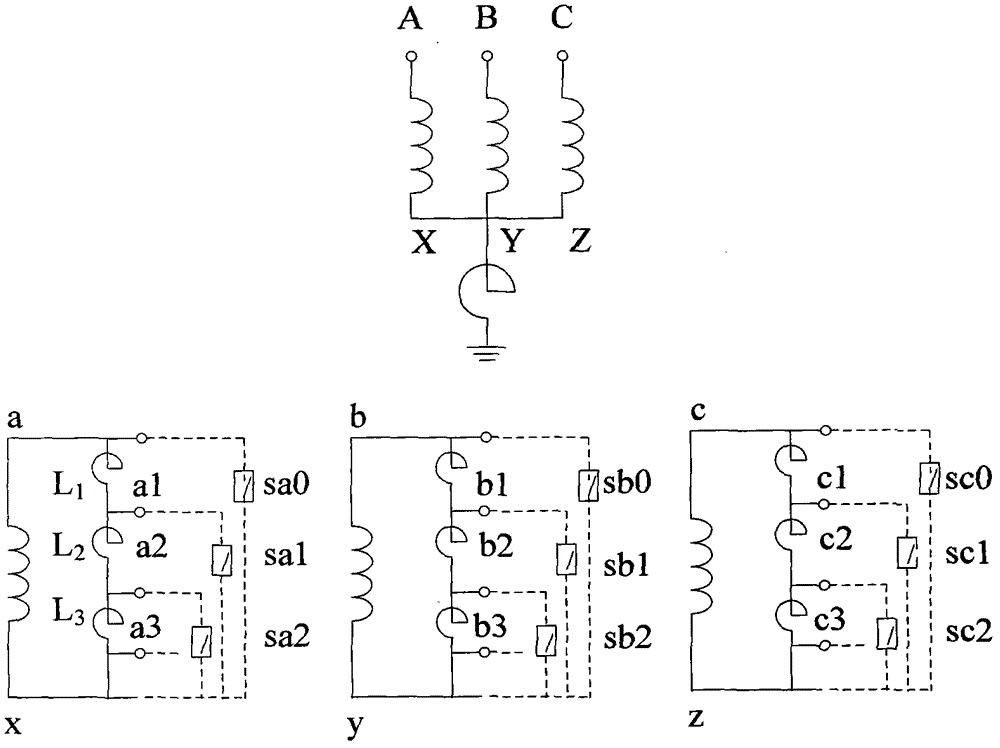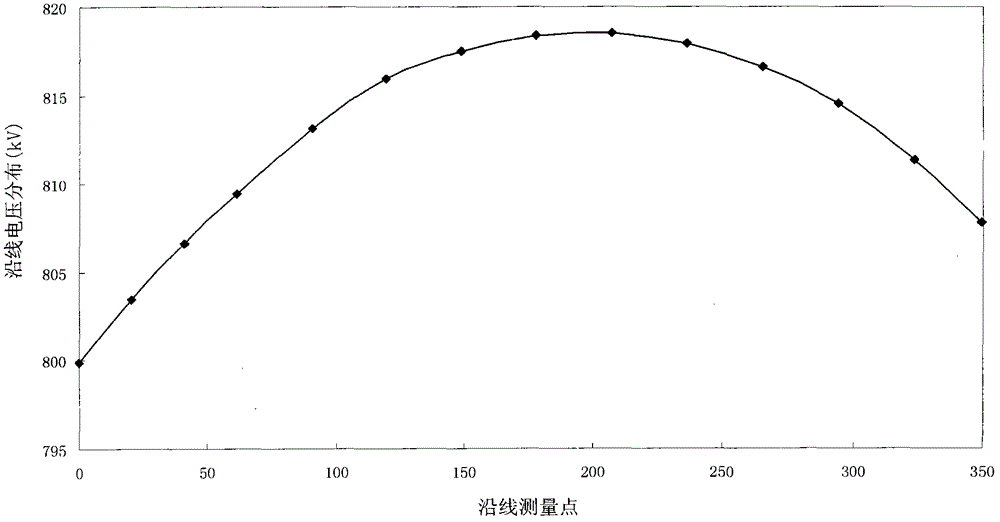Method for inhibiting power frequency voltage from being raised after switch-on of ultrahigh and extra-high voltage no-load line
A technology of no-load line and power frequency voltage, which is applied in the direction of AC network voltage adjustment, circuits, transformers, etc., can solve problems such as difficult control of bus voltage, exceeding the maximum operating voltage of the system, and rise of power frequency voltage of substation bus and lines, etc., to achieve The effect of power frequency voltage suppression
- Summary
- Abstract
- Description
- Claims
- Application Information
AI Technical Summary
Problems solved by technology
Method used
Image
Examples
Embodiment
[0034] In the EHV and UHV transmission lines of the prior art, fixed high-voltage shunt reactors (hereinafter referred to as fixed high-resistance) are generally used. The compensation degree of fixed high-voltage to the positive sequence capacitance of the line is generally 60-90%. , because the line still provides capacitive reactive power to the system, the power frequency voltage of the substation bus after closing is significantly higher than that before closing, and the power frequency voltage along the line also has a relatively large increase.
[0035] Take a 750kV double-circuit line on the same tower as an example. The total length of the line is 350km. A set of fixed high reactance with a rated capacity of 420MVar is installed at both ends of the line. The compensation degree of the fixed high reactance to the positive sequence capacitance of the line is 86.9%. Before the line is closed, if the power frequency voltage of the substation bus is 776.2kV, the power frequ...
PUM
 Login to View More
Login to View More Abstract
Description
Claims
Application Information
 Login to View More
Login to View More - R&D
- Intellectual Property
- Life Sciences
- Materials
- Tech Scout
- Unparalleled Data Quality
- Higher Quality Content
- 60% Fewer Hallucinations
Browse by: Latest US Patents, China's latest patents, Technical Efficacy Thesaurus, Application Domain, Technology Topic, Popular Technical Reports.
© 2025 PatSnap. All rights reserved.Legal|Privacy policy|Modern Slavery Act Transparency Statement|Sitemap|About US| Contact US: help@patsnap.com



